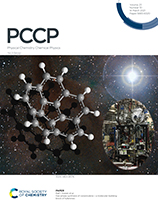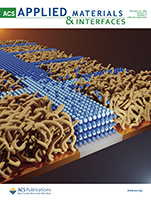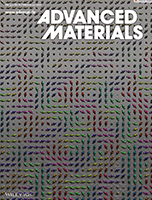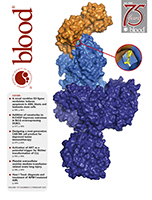The researchers report hybridized 3D plasmon modes stemming from 3D graphene nanostructures, resulting in non-surface-limited (volumetric) field enhancements and a four orders of magnitude stronger field at the openings of cylinders than in rectangular 2D graphene ribbons. Read more »
Journal Covers
Redirecting dynamic surface restructuring of a layered transition metal oxide catalyst for superior water oxidation
Electrocatalysts, particularly those for water oxidation, often experience substantial or at least partial reconstruction. Here, Wang et al. are able to control surface reconstruction using a cationic redox-tuning method on layered LiCoO2–xClx catalysts for the oxygen evolution reaction. The resulting optimized catalyst exhibits excellent electrocatalytic performance in alkaline electrolyte. Read more »
Gas-phase synthesis of corannulene—a molecular building block of fullerenes
Fullerenes have been implicated to play a key role in the astrochemical evolution of the interstellar medium. However, the formation mechanism of even their simplest molecular building block—corannulene—has remained elusive. Here we demonstrate that corannulene can be synthesized in the gas phase through reactions mimicking conditions in carbon-rich circumstellar envelopes. Read more »
Additive Lithography–Organic Monolayer Patterning Coupled with an Area-Selective Deposition
This scene depicts the layer-by-layer growth of an inorganic film in a selected area. The alternation of a chemical agent (blue) deposits on a gray substrate to form an inorganic film. A cross-linked organic material (tan) locally inhibits this reaction and prevents film deposition. Furthermore, the pattern-wise cross-linking of this organic film enables nanoscale pattern generation. Read more »
Chiral Spin Textures in Amorphous Iron–Germanium Thick Films
Robert Streubel and co‐workers report the formation of topological magnetization vector fields in disordered materials with local inversion symmetry breaking, harnessing high‐resolution Lorentz microscopy, quantitative x‐ray microspectroscopy, and coherent scattering. The image shows the reconstructed in‐plane magnetic induction of closely packed Bloch skyrmions embedded into helical spins. Read more »
Construction, characterization and crystal structure of a fluorescent single-chain Fv chimera
In vitro display technologies based on phage and yeast have a successful history of selecting single-chain variable fragment (scFv) antibodies against various targets. However, single-chain antibodies are often unstable and poorly expressed. We explore the feasibility of converting scFv antibodies to an intrinsically fluorescent format by inserting a monomeric, stable fluorescent protein between the light- and heavy-chain variable regions. Read more »
CC-90009, a novel cereblon E3 ligase modulator, targets acute myeloid leukemia blasts and leukemia stem cells
A number of clinically validated drugs have been developed by repurposing the CUL4-DDB1-CRBN-RBX1 (CRL4CRBN) E3 ubiquitin ligase complex with molecular glue degraders to eliminate disease-driving proteins. Here, we present the identification of a first-in-class GSPT1-selective cereblon E3 ligase modulator, CC-90009, that targets acute myeloid leukemia blasts and leukemia stem cells. Read more »
Identifying Ionic and Electronic Charge Transfer at Oxide Heterointerfaces
Researchers identified how ion and electron transfer naturally balance at the LaAlO3/SrTiO3 oxide heterointerface, affecting the band alignment and magnetic signature of the interface. The results show that Sr ions are more mobile at the interface than in the bulk, implicating a high importance of ionic charge transfer in oxide heterostructures. Read more »
Xylella fastidiosa causes transcriptional shifts that precede tylose formation and starch depletion in xylem
During Pierce’s disease, Xylella fastidiosa triggers transcriptional changes in grapevines and induces major physiological responses, including tylose formation and starch depletion. X-ray computed microtomography and a machine-learning algorithm were used to track the depletion of starch reserves in the xylem of a grapevine stem infected with Pierce’s disease. Read more »
Functionalization of Benzotriazole-Based Conjugated Polymers for Solar Cells: Heteroatom vs Substituents
Understanding the structure-property relationship is important when designing new conjugated polymers for high-efficiency polymer solar cells. Rech et al. systematically explore the impact of a variety of functional groups, including nitrogen heteroatoms, fluorine substituents, and cyano groups. Read more »
- « Previous Page
- 1
- …
- 9
- 10
- 11
- 12
- 13
- …
- 21
- Next Page »









